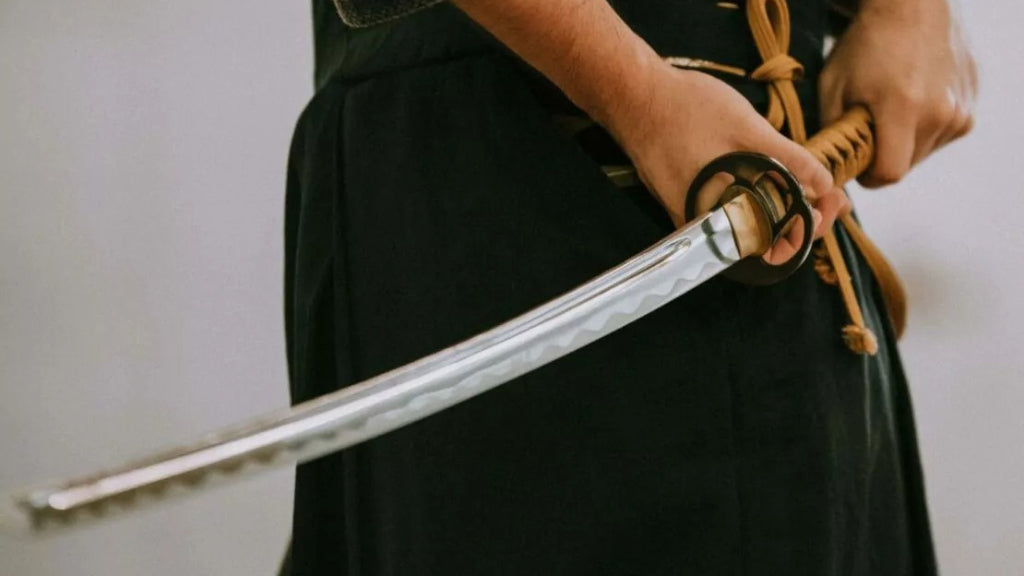The Art of Samurai Sword Drawing: Mastering Iaijutsu

Origins and Philosophy of Sword Drawing
The technique of samurai sword drawing emerged during the feudal era of Japan when samurai often found themselves in situations requiring a swift and decisive response. Unlike battlefield combat, where long engagements were common, the art of Iaijutsu was developed for close-quarters encounters, where the ability to unsheath and strike in one motion could mean the difference between life and death.
At its core, Iaijutsu embodies the philosophy of being constantly prepared. Samurai were trained to anticipate sudden attacks and respond with calm precision, drawing their katana swiftly to neutralize threats. The practice demanded a high level of mental focus, situational awareness, and physical control, blending martial skill with a meditative mindset.
The Mechanics of Sword Drawing
The process of samurai sword drawing involves several key steps:
-
Nukitsuke (The Draw and Cut):
This is the initial movement where the samurai draws the katana from the scabbard (saya) and delivers a cutting strike in a single motion. The blade is typically drawn with a diagonal slash aimed at disabling the opponent immediately. -
Kiritsuke (The Finishing Cut):
After the initial draw and cut, the samurai may follow with a second, more powerful finishing strike, ensuring the opponent is neutralized. -
Chiburi (Blade Cleaning):
A symbolic gesture where the samurai flicks the blood off the blade, though in practice, it also served as a way to maintain the katana's condition. -
Noto (Returning the Sword):
The final step involves smoothly returning the katana to its scabbard. This motion must be performed with the same care and precision as the draw, symbolizing the return to a state of readiness and calm.
Influence on Modern Martial Arts
Today, the art of samurai sword drawing is preserved and practiced in disciplines like Iaido and Kendo, which focus on refining both technique and spirit. While the need for practical sword combat has diminished, the practice of Iaijutsu continues to be a profound exercise in mindfulness, discipline, and the pursuit of perfection in movement.
Cultural Legacy
The mastery of samurai sword drawing has been immortalized in Japanese cinema and literature, most notably in films like Seven Samurai and Yojimbo. Characters who demonstrate expert Iaijutsu, such as Kyuzo from Seven Samurai, embody the essence of a samurai: calm, disciplined, and lethal in a single, fluid motion.
In modern times, the fascination with the samurai's ability to draw and strike with such elegance and precision continues to inspire martial artists and sword enthusiasts around the world. Whether for historical appreciation, martial training, or cultural exploration, the art of samurai sword drawing remains a testament to the skill and philosophy of Japan's warrior class.
Among the many weapon classifications in Japan, the most important one is undoubtedly the Japanese samurai sword, that is, compared with long weapons such as spears and naginatas, the Japanese samurai sword is more famous and can represent Japan's cold weapons. Japan's national gate, but the real samurai sword, what are the specific ones, do you really know?
1. Knife, as a real samurai sword
In Japanese history, as long as you are a samurai, no matter who you are, you will wear two katana swords, one long and one short. And the long real samurai sword set is a knife. The sword is generally called katana because it is the representative of Japanese swords. The blade of the knife is designed in a curved shape, called Jingfan, and the central part of the blade is designed to be the most curved place, because it is easy to draw the knife. Compared with the sword, another Japanese sword is very easy to confuse with the sword, which is the tachi. The difference is that when the knife is placed, the blade is generally upward, while the sword is downward. There are small handles and shackles inserted on both sides of the scabbard of the knife. The small handle is a small knife about 18 cm long, which is used to cut things and cut lines. Occasionally, it also plays the role of a throwing knife, which Japan calls a shuriken. And Ji's role is to straighten the hair and tickle. The sword does not have these things.
At the same time, if the blade of the knife is pointing downwards at the same time, although both the sword and the sword have inscriptions, the sword is on the right and the sword is at the left. There is also an important difference, that is, because the knife is inserted into the waist with the blade upward. Therefore, Japanese samurai generally draw the sword with the backhand (relatively speaking, it is easier to draw the sword to counterattack, so Japan developed the sword-drawing technique that combines drawing and attacking, and later developed the Iai technique. "Seven Samurai" "Jiu Zang, the highest martial artist, has demonstrated his sword-drawing technique many times), while Taidao has two metal rings on the scabbard. There are ribbons and other objects connected, and the head of the scabbard is wrapped in metal, which is called a stone protruding gold object. Because of the metal ring, the tachi is usually hung with the blade down on the waist. Want to buy Japanese katana online? COOLKATANA would be a great choice!

2. The method of distinguishing the sword and the sword in the real samurai sword
There is another way to distinguish between the real samurai sword and the tachi, that is, the tachi is generally longer, the length of the blade is generally more than 2 feet, and there are longer tachis with a length of more than 3 feet, which are generally called big dachi or wild tachi. The bandit leader in "Seven Samurai" is a standard sword hanging from his waist, which is very obvious, while Kikuchiyo's is a non-standard wild sword. Since the Taidao is mainly suitable for horse fighting, it is more curved than the sword, which is good for slashing and not good for stabbing. Relatively speaking, knives are mainly used for foot combat, so there is no need to lengthen them. In addition to slashing, they can also stab.
